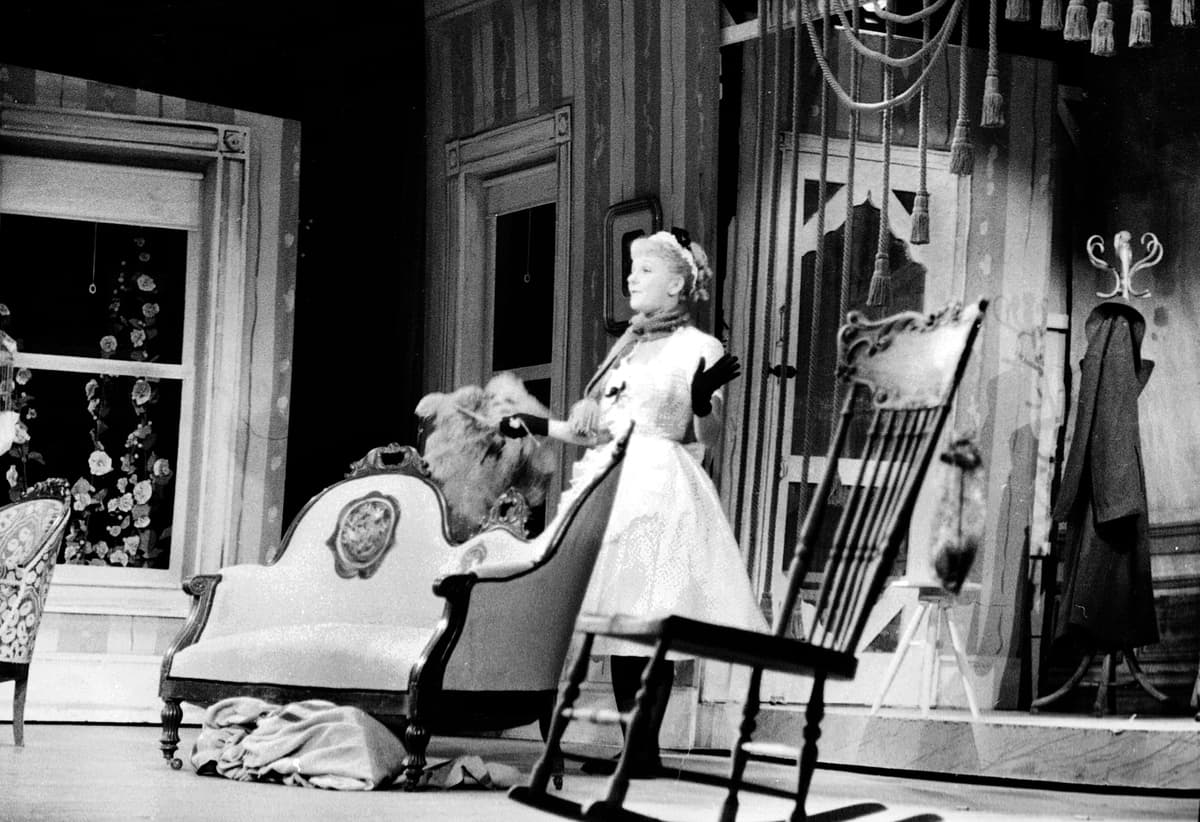No Longer Baffling, Wilder’s Landmark ‘Skin of Our Teeth’ Proves Timeless — With a Few Updates
The play is an ode to humankind’s endless tribulations and its tattered but defiant resistance and resilience.

“Pass up your chairs, everybody. Save the human race.” Broadway audiences once again confront that urgent, never-more-topical appeal at Lincoln Center’s Vivian Beaumont theater, where Thornton Wilder’s “The Skin of Our Teeth,” has its first major New York revival in decades.
The play is an ode to humankind’s endless tribulations and its tattered but defiant resistance and resilience. First run on Broadway in 1942, “Skin” is a landmark in American theater — both farce and tragedy — in which we follow the typical as well as mythic Antrobus family as they are suspended in multiple time frames.
In suburban New Jersey they negotiate an advancing Ice Age; on a holiday in Atlantic City they are forced to flee a biblical flood; and, finally, we watch them recover from a world war and peer into eternity.
The structure is radical, anarchic. Cast members step in and out of their roles, nuzzle talking dinosaurs, march up and down the aisles of the theater. Wilder’s script seems to be receiving and transmitting tonal as well as unheard melodies, intercepting psychic and archetypal relevance both explicitly stated and not.
Soon after the play opened in New York, Wilder was accused of borrowing his correlation of individuals and archetypes from James Joyce’s “Finnegans Wake.” He responded by saying that it was up to the individual to read Joyce’s sprawling and obscure work — few having the perseverance — and then decide for himself. Popular theater, however, has always been a place for making the vanguard accessible.
Additional vanguard territory here brilliantly appropriated by Wilder is Bertolt Brecht’s “theater of alienation,” in which the German playwright tried breaking the illusory “fourth wall” separating audience and actors. In “The Skin of Our Teeth,” the performers address the audience directly — a technique that dates back to ancient Greece, but wasn’t SOP in the “well-made” comedies and dramas of Broadway at the time.
Referenced, too, are the works of Italy’s Luigi Pirandello, who cleaved a divide between the actors and the roles they purported to inhabit. Adding what we would today call another layer of “meta” self-reflection is the multiple incidents of performance breakdown that Wilder seeds throughout the script.
“The Skin of Our Teeth” lays before us a primer of all the things that can go wrong in live theater. Cast members freak out and refuse to say their lines; others get sick and their ad-hoc replacements have to be drilled.
Despite Wilder’s literary and theatrical fame, “The Skin of Our Teeth” was pronounced too commercially risky by every established producer on Broadway. It reached the stage only because Michael Myerberg, who had managed conductor Leopold Stokowski for five years, now decided to make his debut as a Broadway producer. The cast was star-studded, but the pre-Broadway tryout tour was very rocky.
Road audiences were baffled. At one performance, “We went up for the second act and most people had left,” Dick Van Patten, then a teenager playing act one’s Telegraph Boy, recalled 50 years later. Eventually a program note by publicist Richard Maney was able to give spectators a needed heads-up on what they were about to experience, and “Skin” wound up running a year on Broadway.
Lincoln Center’s revival is directed by Lileana Blain-Cruz, with the dramaturgical collaboration of Branden Jacobs-Jenkins. They have updated cultural references, added some choreography, and done a bit of textual pruning. Wilder’s once-radical theatrical tropes are no longer baffling to an audience, nor, by now, is a cast that is almost exclusively people of color.
In 1942, all but a couple of cast members were white; today’s production reverses that ratio. Giving roles written for whites to African-Americans might be justified and necessary as corrective to historical exclusion, but neither is it at this point necessarily illuminating.
Certainly it is fair to ask: Is Ms. Blain-Cruz doing this simply because she can? I would say not. Universality is the point of Wilder’s work.
Universal, timeless, forever pending: “The end of this play isn’t written yet,” chambermaid-seductress-combat veteran Lily Sabina assures the audience right before the final curtain falls.

